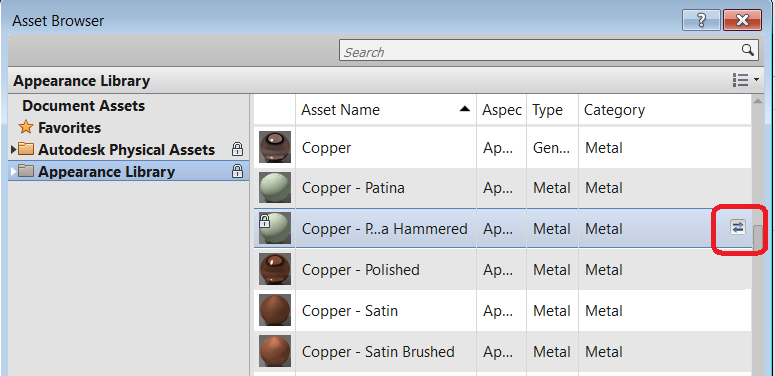You can replace an existing asset with another that you select from the Asset Browser. When you do this, the material assumes the properties of the new asset.
Note: If you edit an asset that is used in a project, that asset will change in any other material in the project that also uses that asset. You must replace or duplicate the asset in order for the asset to be different than the asset selected in your original material.
To replace an asset of a material
- Select the material in the Material Browser dialog.
- In the Material Editor panel of the Material Browser dialog, click the tab for the asset to replace (for example, Appearance, Physical or Thermal), and then click the Replace Asset button
 . Note: Revit LT does not support physical or thermal assets for materials. The Physical and Thermal tabs do not appear in the Material Editor panel, and some of the functionality described in this section does not apply to Revit LT . See Materials in Revit LT.
. Note: Revit LT does not support physical or thermal assets for materials. The Physical and Thermal tabs do not appear in the Material Editor panel, and some of the functionality described in this section does not apply to Revit LT . See Materials in Revit LT. - In the Asset Browser dialog, select the asset to add to the material. Tip: To locate an asset more easily in the Asset Browser, click one of the column heads to sort the assets by name, aspect, type or category. You can also use the Search bar located above the asset list.
- Click the Replace button
 located to the right of the selected asset.
located to the right of the selected asset. 
The selected asset replaces the original asset in the material and displays in the Material Editor panel. Repeat this procedure to replace other assets.
The asset change applies only to the material in the current project.
- Close the Asset Browser and click Apply or OK on the Material Browser dialog.